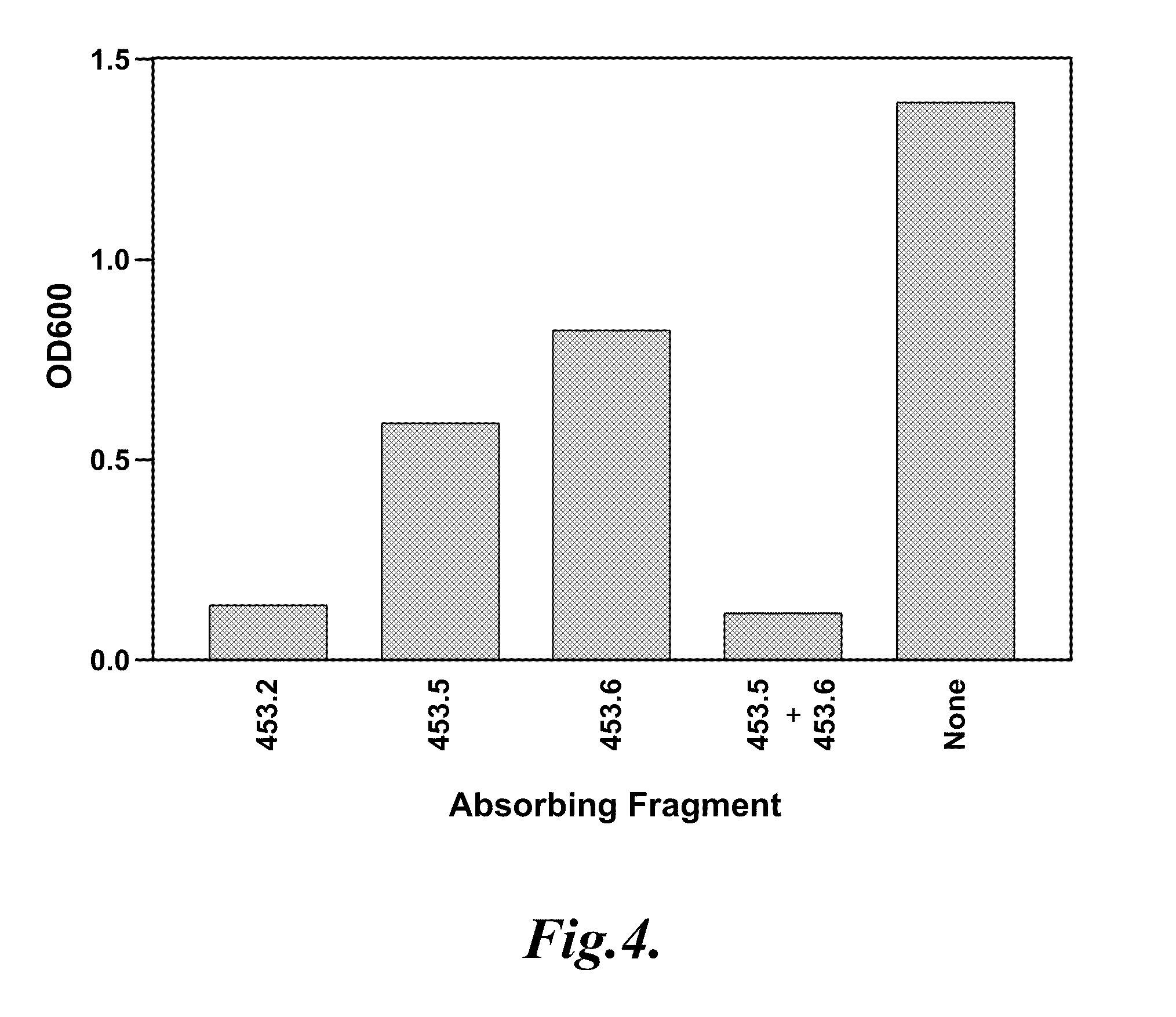Syphilis diagnostic tests and kits
a technology for syphilis and diagnostic tests, applied in the field of methods for diagnosing syphilis, can solve the problems of many if not all of the available recombinant i>treponema, damage to the brain and central nervous system, and associated with both specificity and sensitivity
- Summary
- Abstract
- Description
- Claims
- Application Information
AI Technical Summary
Benefits of technology
Problems solved by technology
Method used
Image
Examples
example 1
[0075]This example describes the expression of the 15 Tp92 polypeptide fragments having the amino acid sequences set forth in SEQ ID NOs:7-21 in E. coli and the purification of the 15 Tp92 polypeptide fragments (SEQ ID NOs:7-21) from E. coli. This example also describes the results of experiments to identify which of the 15 Tp92 polypeptide fragments (SEQ ID NOs:7-21) are bound by antibodies from human syphilis patients.
[0076]Fifteen recombinant protein fragments (SEQ ID NOs:7-21) were created that span the entire length of the mature Tp92 protein (SEQ ID NO:2). Table 1 shows the boundaries of these fragments (numbering is from the first amino acid at the N-terminus of the mature Tp92 protein (SEQ ID NO:2)).
TABLE 1Number of First andFragmentLast Amino AcidNumberResidueSEQ ID NO:F1 26-5927F2593-8378F3593-7599F4749-83710F5785-83711F6 26-76412F7 26-22013F8221-59214F9 26-12315F10124-22016F11221-34417F12345-45618F13457-59219F14404-77520F15 26-40321
[0077]The 15 Tp92 peptides (SEQ ID NOs:7...
example 2
[0081]This example describes the expression of polypeptide fragments of the Tp0453 protein and the identification of polypeptide fragments that bind antibodies from human syphilis patients.
[0082]To prepare recombinant proteins, coding sequences based on the ORFs for Tp92, TP0453, and Gpd were PCR amplified from T. pallidum subsp. pallidum (Nichols strain) genomic DNA with primers designed from the coding sequence of each gene. Proteins were expressed with the N-terminal signal sequence when applicable, except for Tp92-derived sequences. The full-length ORF of Gpd was also expressed. PCR products representing the nucleotide sequence encoding the polypeptide fragments were ligated in frame with expression plasmids. Nucleotide sequences from Tp92 and TP0453 were cloned using the pRSET T7 expression plasmid. Full-length Tp0453 protein and recombinant peptide fragments of Tp0453 were expressed and purified, as described in Example 1. The amino-terminal Tp0453 peptide fragments did not in...
example 3
[0092]This example describes the expression of polypeptide fragments of the Gpd protein and the identification of polypeptide fragments that bind antibodies from human syphilis patients.
[0093]The full-length T. pallidum Gpd protein consists of 356 amino acids (SEQ ID NO:6). Sequences from Gpd were cloned using the BG 1861 vector (that expresses proteins as N-terminal His6-ORF fusion proteins) and expressed in the E. coli expression strain BL21(DE3) / pLysS (Invitrogen, Carlsbad, Calif.). Full-length Gpd protein and recombinant peptide fragments of Gpd were expressed and purified as described in Example 1. Six recombinant protein fragments (SEQ ID NOs:28-33) were created that span the entire length of the Gpd protein (SEQ ID NO:6). Table 3 shows the amino acid boundaries of the peptide fragments (numbering is from the first amino acid of SEQ ID NO:6).
TABLE 3FragmentNumber of First and LastNumberAmino Acid ResidueSEQ ID NO:Gpd.1 1-19028Gpd.2165-35629Gpd.3 1-10230Gpd.4 77-19031Gpd.5165-2...
PUM
| Property | Measurement | Unit |
|---|---|---|
| concentrations | aaaaa | aaaaa |
| temperature | aaaaa | aaaaa |
| dark-field microscopy | aaaaa | aaaaa |
Abstract
Description
Claims
Application Information
 Login to View More
Login to View More - R&D
- Intellectual Property
- Life Sciences
- Materials
- Tech Scout
- Unparalleled Data Quality
- Higher Quality Content
- 60% Fewer Hallucinations
Browse by: Latest US Patents, China's latest patents, Technical Efficacy Thesaurus, Application Domain, Technology Topic, Popular Technical Reports.
© 2025 PatSnap. All rights reserved.Legal|Privacy policy|Modern Slavery Act Transparency Statement|Sitemap|About US| Contact US: help@patsnap.com



